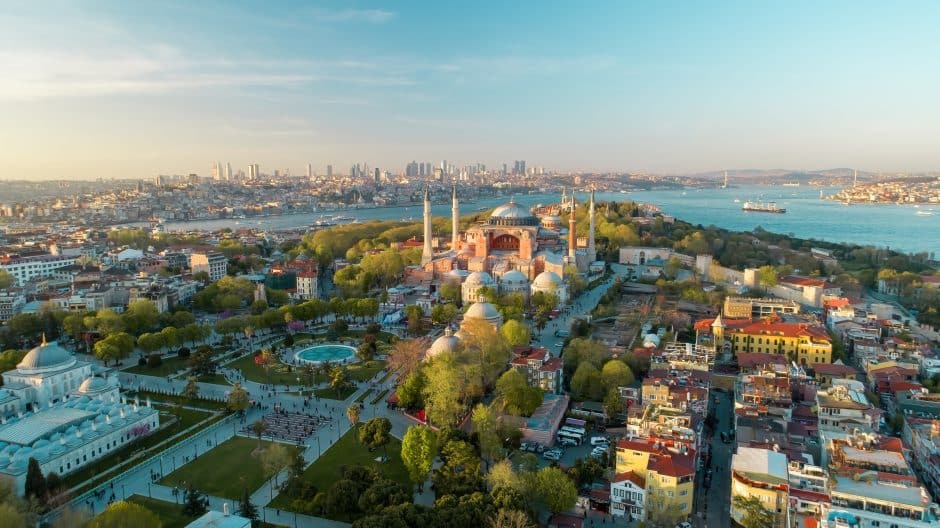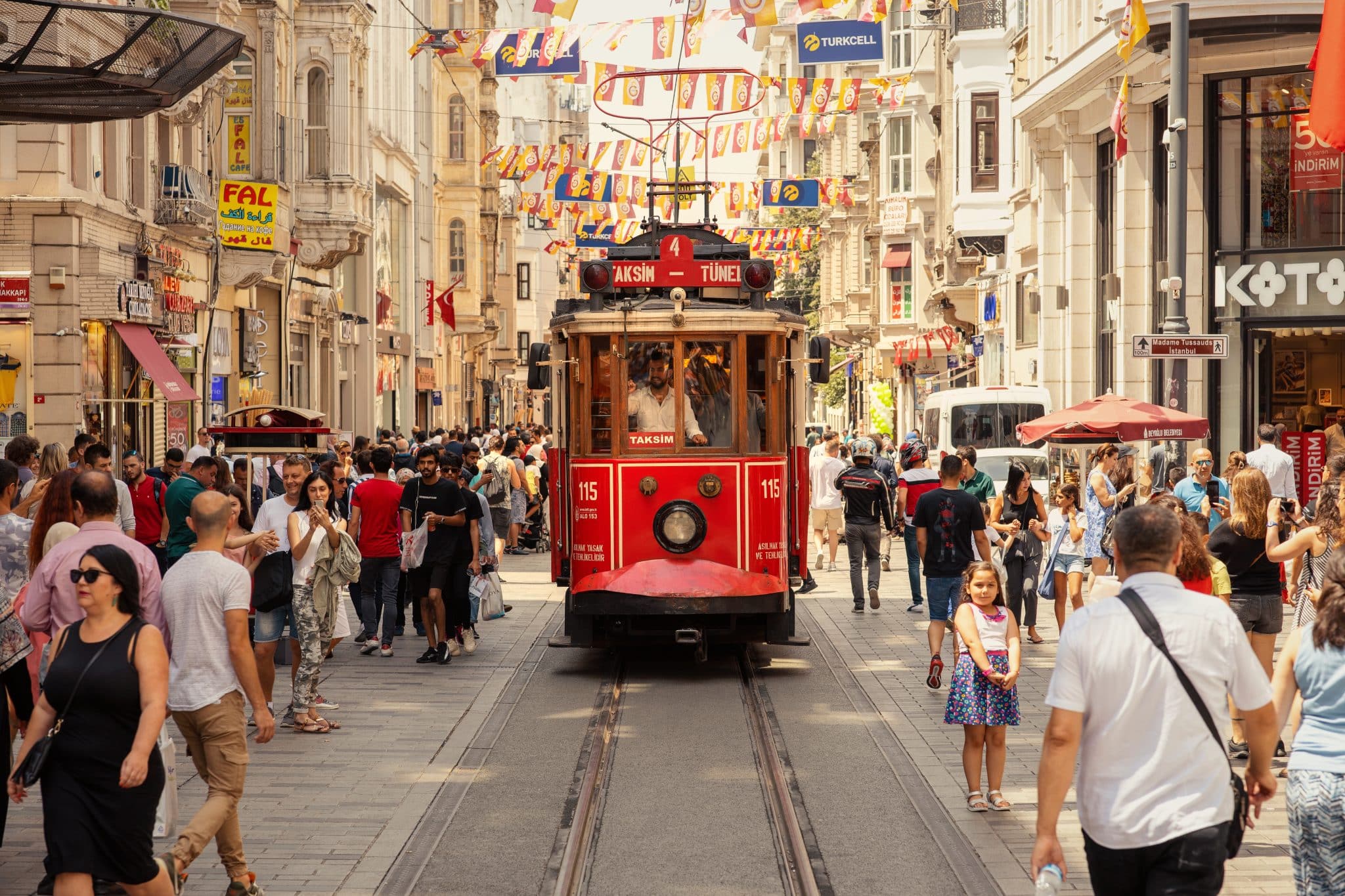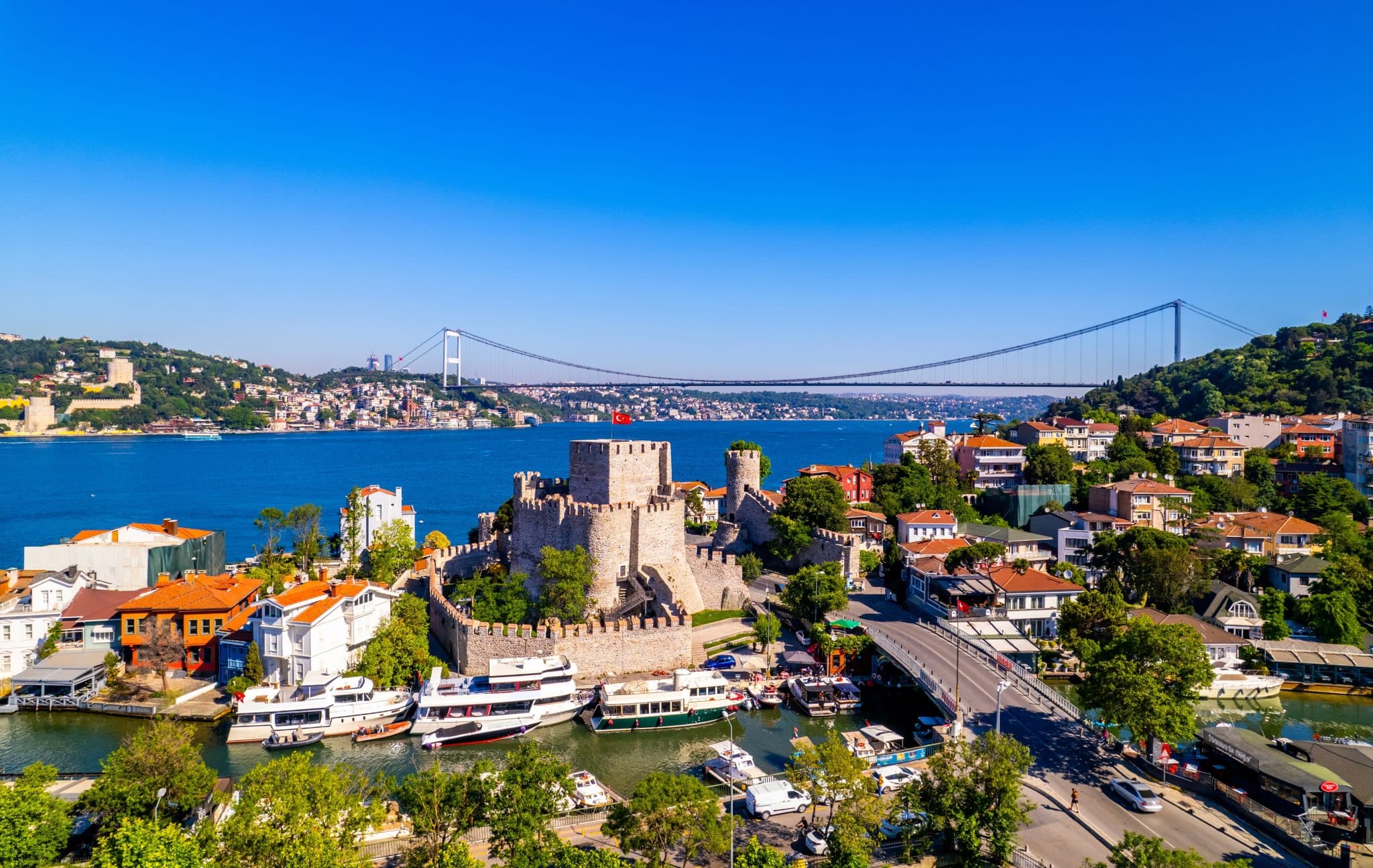Istanbul’s quest for earthquake resilience and sustainability

The last major earthquake in Turkey had a magnitude of nearly eight, causing massive damage to millions of buildings and resulting in the loss of thousands of lives. The country also experiences regular smaller tremors and therefore the historic city of Istanbul, the country’s largest city, faces a dual challenge: to become more earthquake-resistant and to do so in a way that aligns with sustainable urban development, involving citizens in the process. So how is Istanbul turning this potential peril into an opportunity for innovation and sustainability?
This article was originally published on the NetZeroCities website, here.
The largest city in the European continent and a historic mix of Western and Oriental culture, Istanbul is home to 16 million inhabitants – a challenge in itself for tackling the city’s climate-related problems.
“The city’s urbanisation pattern leads to inadequate infrastructure, a dense population and urban sprawl. Istanbul’s rapid population growth poses a threat to sustainability, with issues like transport congestion, uncontrolled land development and environmental risks requiring effective governance,” says Elvin Öksüz Bayazit from Istanbul’s Environmental Protection and Development Department.
In addition to the typical challenges that cities face in achieving their ambition to reach climate neutrality, Istanbul has a much bigger quest: how to become more resilient to the threat of earthquakes due to its unique geographic location on two tectonic plates. Most of them are not very strong, but the most recent major one, measuring 7.8 on the Richter scale and that hit the country in February 2023, caused mass destruction and loss of life. Preparing for another expected powerful earthquake and future-proofing buildings in the face of climate change is a common denominator of activities in cities like Istanbul.
“We know that we can’t retrofit every building, but every good practice has a big positive impact. That’s why we find every climate-friendly step we take very valuable and brings us closer to our climate commitments,” added Öksüz Bayazit, explaining why the cities authorities have decided to shift up a gear and join the Pilot Cities Programme (PCP), part of the Climate KIC led NetZeroCities, embarking on an ambitious journey to retrofit the city to become earthquake-proof, while adopting cutting-edge sustainable principles.
“We must act quickly because the threat of an earthquake is a constant concern for us. While the exact timing of the next earthquake is uncertain, the necessity to retrofit our extensive stock of aging buildings is undeniable. Furthermore, this transition presents a unique opportunity to also address climate neutrality. By embracing sustainable practices, we can ensure that our efforts to improve seismic resilience are carried out in an environmentally responsible manner. We want to lead by example, showcase innovative solutions and inspire all stakeholders and other cities,” continues Öksüz Bayazit.
Guiding citizens to retrofit their homes
To achieve this goal, Istanbul wants to develop a range of tools for citizens to help them retrofit their homes.
“Our Pilot City Programme project will provide a guide to ensure that buildings renovated as part of the urban transformation are green and carbon neutral. We will monitor energy consumption in the homes of a pilot area (Bayrampaşa KİPTAŞ) and promote behavioural change towards energy efficiency through training and conferences. The project will also include the development of business and financial models. We are trying to take a holistic approach to this opportunity for change,” explains Öksüz Bayazit.
As a first step, the city is planning to install sensors in the flats in the pilot district. Through these sensors, citizens will be able to view their hourly, daily and monthly consumption values on their mobile phones or computers and assess their energy consumption.
“We want to understand what their consumption is and how they use energy in their homes,” says Öksüz Bayazit. It will also provide residents with recommendations for increasing energy efficiency. In this way, the people living in the pilot district covered by the project will provide continuous data for the municipality and derive tangible benefits.
In addition, the project will strengthen the bond between communities and local authorities by creating a new communication channel between them. The data obtained from the sensors will also create added value for the municipality to develop its infrastructure strategies.
The final outcome of the project will be a comprehensive guide for citizens and urban stakeholders, providing knowledge and data on retrofitting. The guide will focus on the design processes for green buildings, renewable energy technologies, green financing and improving energy consumption in buildings. In addition, this guide will include the current and future legal framework, the principles of sustainable urban planning and working principles for increased citizen participation. It will also include content such as capacity building for practitioners and guidance on the right materials or techniques.
The tool based on the sensor data will be included in the guide and will be accessible to decision-makers, citizens, architects, engineers or contractors who want to increase the number of green buildings and climate awareness. The project should therefore pave the way for raising public awareness of energy efficiency and climate change mitigation.
The power of collaboration
The Istanbul authorities know that systemic transformation cannot be achieved alone. That’s why the city has teamed up with partners such as ÇEDBİK (Turkish Building Council), Demir Energy Company and Florowise (an energy service company that modernises buildings to reduce their carbon footprint) to plan a series workshops, trainings, conferences and participatory campaigns to involve a whole range of stakeholders, including citizens in the pilot project. And since the municipality does not have the authority to mandate retrofits, raising awareness of the advantages of the transformation is particularly critical.
Faced with a lack of culture and infrastructure around citizen and stakeholder engagement, a lack of public trust and knowledge about existing green building technologies and applications, and a lack of joint participatory methods, models or roadmaps, the municipality wants to identify and apply awareness-raising and knowledge-sharing methods and active participation models, to boost social drivers and motivators.
“To make buildings more sustainable, together with making them earthquake-proof, it is not enough for the municipality to provide support, or for citizens to know their way around. A multi-stakeholder approach is needed. Regulations and incentive systems need to be put in place. That is why we want to create awareness with our project, inspire and allow everyone to take responsibility. To make Istanbul’s buildings climate-neutral, many elements need to come together. These include citizens, policymakers, financial institutions and business,” Öksüz Bayazit says.
The city had to engage with citizens and find 200 volunteers to have sensors installed in their homes. “It’s completely free and beneficial. We tried to inform people in many ways, but we could not reach enough volunteers in a huge area. This was a surprise for us and reminded us that we need to raise awareness. Regardless, we continue to educate citizens about green buildings and climate change. People are willing to be informed, but there is room for improvement in taking the initiative. We now know that it takes time for climate and the environment to become a priority in their lives,” says Öksüz Bayazit on the lessons learned from the project.
The city has learned this lesson and already found the first 100 volunteers who will measure their own energy consumption. “We organise many training sessions and conferences as part of our project because we want to bring together different stakeholders such as contractors, citizens, local and central administrations and inform them that we are working on a guide and raise awareness of the issue through information. Our first training sessions were so popular that we even had to increase the number of them. So, we are seeing more engagement from stakeholders, which is a great success for us,” adds Öksüz Bayazit.
The workshops bring together all relevant stakeholders, including the residents living in the buildings identified within the scope of the project. They aim to create a basic awareness of the process and give them a voice to express their ideas and expectations. In addition, these activities will help the partners to expand their capacities in this area, promote social innovation and support the implementation of participatory democracy.
Cost is a key factor for citizens
According to Elvin Öksüz Bayazit, 64 % of Istanbul’s emissions come from stationary energy i.e. energy used in buildings. Therefore, any improvement in this area will have a significant impact on the city’s climate neutrality target. However, even with the guide and the awareness-raising campaign, the municipality knows that residents cannot retrofit their homes without financial incentives.
“We understand that the economic situation always takes priority, and that earthquake risk is about survival. People know that all they need is a solid building to live in and that’s it. Our goal is to show them that if they include the green and low-carbon model in their budget, they can get more resilient buildings for the earthquakes and also for climate change, and that they will get sustainable energy and reduce their energy bills at the same time. For this reason, we will also work on the financial business models. From our communication with the citizens, we know very well that a realistic financial incentive system needs to be created for this change to take place,” says Öksüz Bayazit.
The next step of the project is to develop business and financial models and find opportunities by attracting financial institutions to get involved and participate in the city’s transition to climate neutrality. The city also hopes to convince the central government to support them in their endeavours.
“Istanbul is a city that is difficult to work with on environmental issues, but it sets an example every step of the way,” concludes Öksüz Bayazit. “We can say that we are a big, open and living laboratory. We want to move forward in an inclusive way, even is that means taking baby steps. By creating a guide to greening urban transformation, we wanted to lead people towards buildings that are both earthquake-proof and climate-resilient. Now we are sure that we need to find a financing mechanism for this change.”
By addressing the dual challenges of earthquake preparedness and climate neutrality, Istanbul is not only preserving its historic and vibrant character but also demonstrating how cities can turn potential threats into opportunities for sustainable growth and social engagement. And as part of the EU Cities Mission, its commitment to resilience and sustainability should set a powerful example for other ambitious cities.
This article is part of Climate KIC’s #LiveableCities Campaign, where we explore the pathways to a climate neutral, just, and more beautiful future. By 2030, our goal is to help transform over 400 cities into thriving, climate-resilient communities. This campaign captures the stories and lessons of ambitious cities in Europe and around the world. We want to show a vision of what’s possible when cities and stakeholders come together to tackle the climate crisis.



